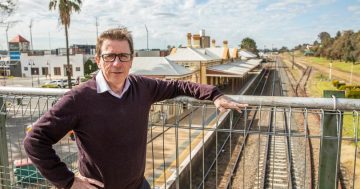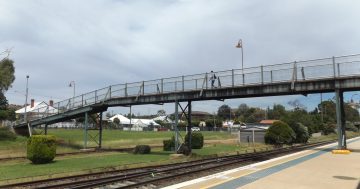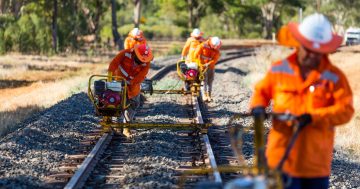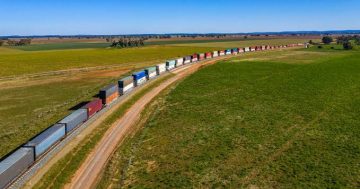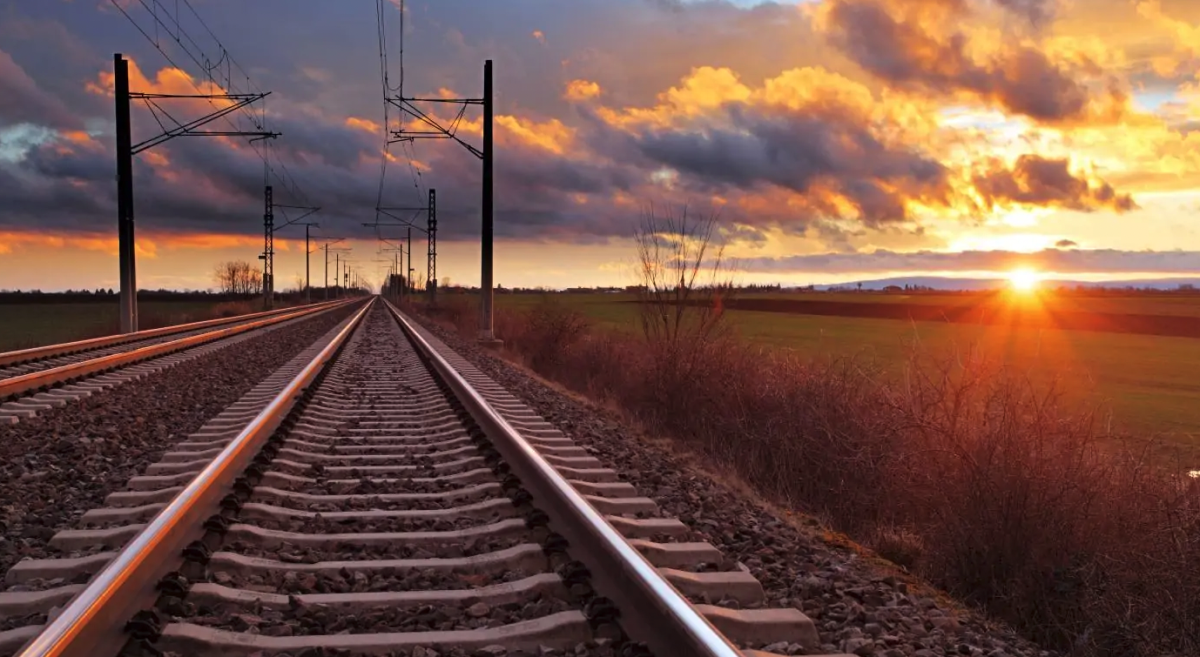
It’s full steam ahead for the Inland Rail freight mega-project in the Riverina. Photo: ARTC.
It’s been a bumpy year for Australia’s Inland Rail mega-project, partially derailed by an independent review that detailed multibillion-dollar cost blowouts, governance issues and community pushback.
But when it comes to Southern NSW, the Australian Rail Track Corporation (ARTC) has assured Riverina communities that it is full steam ahead.
“For these southern projects, and for Albury to Illabo in particular, what came out of the independent review was that these are critical projects and they have become the priority projects across the Inland Rail program,” said ARTC environment manager Wayne Window.
“That put the focus on this project and gave us the impetus to get all this work done as quickly and as efficiently as we can.”
Two additional documents on the Albury to Illabo section have been placed on public exhibition and the Inland Rail team is hosting community information sessions in Wagga Wagga tomorrow (22 November) and in Junee on Thursday (23 November).
“We’re suggesting that as many people as possible go to the forum and ask questions about Inland Rail and understand the impacts,” said Chris Roche from the Wagga Residents & Ratepayers Association.
“We are not against the Inland Rail, we just don’t want it cutting our city in half.”
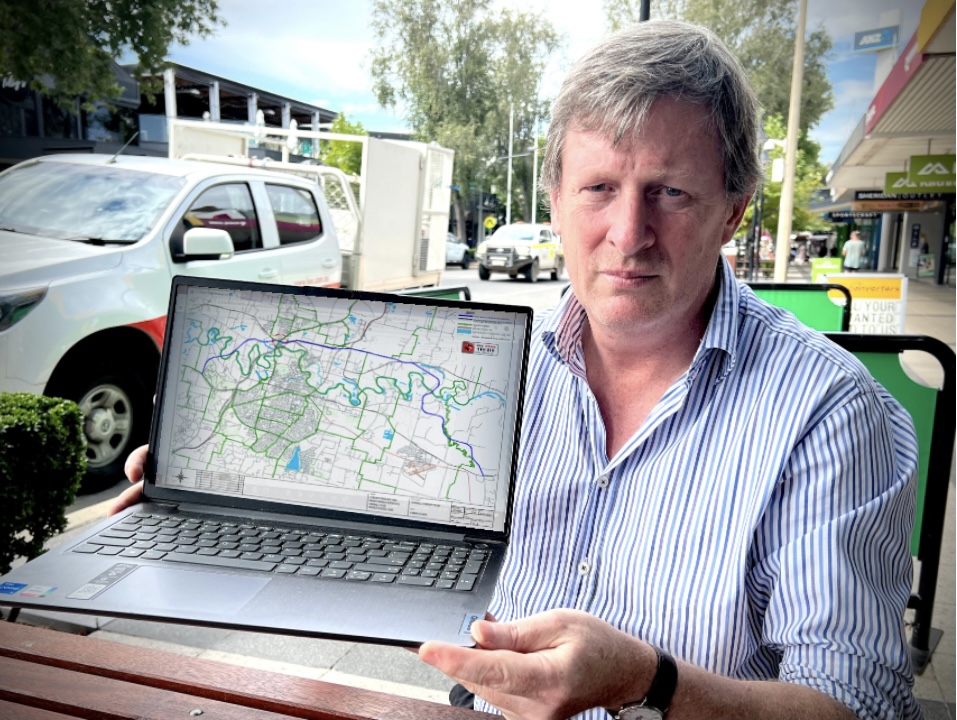
Wagga Ratepayers Association’s Chris Roche wants the Inland Rail line to bypass the city. Photo: Chris Roe.
The forum will cover the Response to Submissions Report, which looks at the public feedback to the Environmental Impact Statement (EIS) released in August, and the Preferred Infrastructure Report (PIR), which examines air quality, noise, and traffic impact assessments.
“A Preferred Infrastructure Report looks at additional topics of assessment, or if something needs to change as a response to comments,” explained Mr Window.
“We were given a PIR request to do some more work around traffic, noise and air quality.”
While Wagga Residents & Ratepayers Association has continued its call for the project to be rerouted around the city, Mr Window said this was not “part of the Inland Rail scope”.
“The Government has been very clear in the business case that they set initially in 2016, and then through the independent review, that the route we’re working on, that does go through the middle of the city, is the preferred route,” he said.
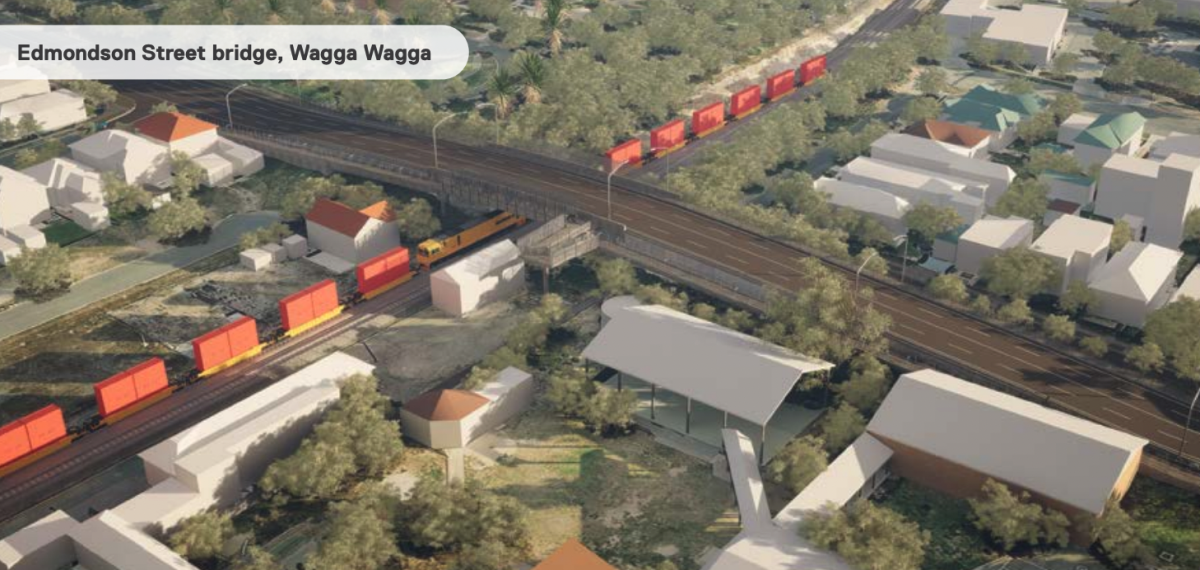
A revised design of the Edmondson Street Bridge would include a separate footbridge with improved disabled access. Photo: ARTC.
Other concerns put forward by the Wagga community include delays at the Bourke Street rail crossing, the impact of raising the Edmondson Street Bridge and the ability of the North Wagga viaduct to handle the heavier, longer and more frequent freight trains.
“We’re saying that we need to be making noise now,” said Mr Roche.
“If we don’t stand up and yell, Inland Rail is gonna stand back and say, OK, the people of Wagga are happy with this, so let’s just roll on.”
While major changes such as a bypass are off the table, Mr Window said refinements were still to be done.
One example is the proposed addition of separate footbridges alongside the reconstructed Edmondson Street Bridge in Wagga and Kemp Street in Junee, which would improve disabled access.
“The Edmondson Street Bridge is getting raised to allow the double-stack trains through and that makes it hard to put a DDA [Disability Discrimination Act] accessible crossing on the road bridge because of that height,” he said.
“We’ve got just enough footprint to put a separate pedestrian bridge and get the right length of ramp so we’ve got that capability there.”
Mr Window said they had also responded to concerns that the North Wagga viaduct, which has a speed restriction of 40 km/h, would need to accommodate larger, heavier trains travelling at twice the speed.
“The 40 km/h zone is a temporary speed restriction,” he said.
“There’s been some engineering studies into the viaducts and the bridges, and some rectification work is needed to occur as an ordinary part of the maintenance activity of ARTC.”
Mr Window encouraged the community to attend the information sessions to gain guidance on how to access the PIR and understand how to deliver feedback.
“So it’s not intended to be a public meeting or public debate on the merits of the project, that’s got to go through that formalised submission system,” he said.
“Staff will help you to look at the documents that are out there and, because it’s on public exhibition, to explain to people how they can make submissions to the Department of Planning and Environment website.”
The Wagga community information session will be held at the Wagga Wagga City Library on Wednesday (22 November), between 12 pm and 4 pm, and in Junee on Thursday (23 November) at the Athenium Theatre.
The report will be available for public review and submission until 6 December and you can read a summary here.
Original Article published by Chris Roe on Region Riverina.







